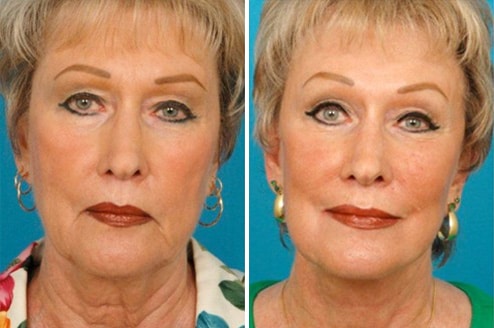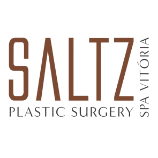FACELIFT


Facelift
What is a Facelift?
A Facelift, formally known as rhytidectomy, removes the loose skin on your face and neck, tightens underlying tissues, and removes excess fat. The result is a younger, firmer-looking face that belies your actual age. A Facelift in Salt Lake City and Park City, Utah with Dr. Saltz allows you to look as good as you feel! Dr. Saltz has performed more than 1,850 Facelift Procedures! To schedule your facelift consultation with Dr. Saltz, dial 435.655.6612 today to reach our Park City office, or 801.274.9500 for our Salt Lake City office!

Facelift in Salt Lake City & Park City, UT
What is a Facelift?
A Facelift, formally known as rhytidectomy, removes the loose skin on your face and neck, tightens underlying tissues, and removes excess fat. The result is a younger, firmer-looking face that belies your actual age. A Facelift in Salt Lake City and Park City, Utah with Dr. Saltz allows you to look as good as you feel! Dr. Saltz has performed more than 1,850 Facelift Procedures! To schedule your facelift consultation with Dr. Saltz, dial 435.655.6612 today to reach our Park City office, or 801.274.9500 for our Salt Lake City office!
What Facial Plastic Surgery Procedures are Available?
While getting a Facelift is something that you desire, doing a little bit of research beforehand is always a good idea. With different faces and different expectations, there are a few different options and techniques available to achieve your goals.
This all-encompassing cosmetic treatment addresses the aging neck, face, eyelids, and forehead. It includes several procedures that tighten the sagging skin and, depending on the need, correct deeper structures. The incisions begin under the chin for treatment of the neck, continue around the ears, and end at the temple area along the sideburn. The tissues are repositioned and the muscles tightened and lifted. The skin is then pulled back over the muscles and excess skin is trimmed away, tightening the neck and facial skin.
The Modern Facelift in Salt Lake City and Park City includes the treatment of the Superficial Muscular Aponeurotic System (SMAS). This procedure corrects the expressions and movement of your face, or the up and down muscles, that allow you to frown and smile. Dr. Saltz utilizes fibrin glue to seal the deeper layers prior to closure helping to minimize bruising and swelling and expedite healing. Because we use skin glues instead of skin sutures, this allows our patients to cover their new scars with make-up in the very first days after surgery.
These are procedures performed using endoscopic surgery with 3-4 very small scars behind the hairline. A brow lift specifically targets forehead wrinkles and sagging skin above the eyebrows.
A neck lift incision begins at the front and extends around and behind the ear, ending below the scalp. The skin is lifted to correct sagging, jowls, or fat accumulation in the neck.
What is Involved in the Recovery After a Facelift?
After your surgery, your incisions will be covered with bandages that must remain in place for 48 hours. You will experience extensive bruising and swelling due to tissue trauma. This will last from two to three weeks. While you may not want to go out in public, you will begin to feel much better just a few days after your surgery. Your stitches will come out in a week. There will likely be some numbness in areas of your face, which is normal and may last for a few weeks.
Frequently Asked Questions
Why should I opt to have a facelift with Dr. Saltz?
Dr. Saltz is board certified by the American Board of Plastic Surgery. He was Associate Professor of Plastic Surgery and Director of the Summit Plastic Surgery Center at the University of Utah prior to opening his practice. He has been president of both the International Society of Aesthetic Plastic Surgeons (ISAPS) and the American Society for Aesthetic Plastic Surgery (ASAPS). He has published and presented over 500 national and international papers on various aspects of reconstructive and plastic surgery. He has written seven books and 39 book chapters on plastic surgery.
Those are the kind of credentials you can trust with a procedure as complicated as a facelift. This isn’t simply a case of lifting skin and stretching it. You’ve seen plenty of botched cases of that in the celebrity world. This is a complex procedure that demands extensive knowledge of facial anatomy and structure. Dr. Saltz has nearly 30 years of practicing and teaching surgery and will deliver the results you seek.
Am I a good candidate for a facelift?
Many people are good candidates for a Facelift. The signs of aging and sun damage — wrinkles, creases, and sagging skin — are especially evident on the face. Especially living in the dry, high altitude of Salt Lake City or Park City, Utah, our faces take a beating from the sun, the hot and cold temperatures, and the low humidity. And that’s not even addressing lifestyle issues such as stress that also age our skin.
How long will my results last?
The changes made by Dr. Saltz are permanent. The repositioning of the SMAS system and tissue will remain in place the rest of your life. They will continue to improve as the swelling decreases. It will take a few months to see your full results, as swelling can come and go especially later in the day. It’s important to remember that these changes are for the duration. Muscles that are repositioned are not going to shift. Excess skin that has been removed is gone.
That said, the aging process will continue, but it will advance from a younger starting point. Still, many patients opt to have a more limited procedure, a mini facelift, in 5-10 years to keep up with the natural aging process.
What will my scarring be like after my facelift?
Dr. Saltz uses his extensive expertise with this surgery to effectively hide your incisions. He uses the natural chin crease and hides the ear incisions in the hairline as much as possible. These scars will heal well naturally and will be quite inconspicuous in a matter of months.
How soon after my surgery can I resume normal activities?
Facelifts involve a good deal of tissue lifting and repositioning. This creates tissue trauma, bruising, and swelling, making a facelift recovery more involved than many other aesthetic procedures. It’s tempting for patients to want to get their blood moving again and exercise to help with their recovery, but some patience here will go a long way. Exercising too soon after this surgery can lead to complications and a longer recovery.
For the first few days, Dr. Saltz encourages his patients to take short light walks, as this helps with circulation. The key is to not raise your heart rate or blood pressure — this can cause blood vessels on your face to bleed.
You can increase activity levels over the remainder of your first month after surgery, but heavy lifting, weight training, and strenuous exercise needs to be avoided. You need to keep your facial blood pressure down.
Most patients can return to work by the third week after surgery, but you’ll probably need to use some camouflage cosmetics. After one month, you can add light cardio exercise, such as slowly pedaling a stationary bike. At six weeks you can return to all exercise, although this can vary by the patient.
What are the risks involved with facelift surgery?
A facelift with Dr. Saltz is major surgery. That means it includes the risks associated with surgery: bleeding, infection, hematoma, and the like. Beyond those general risks of surgery, facelifts can create a temporary loss of muscle function and sensation. The incision scars can thicken and widen, especially if recovery procedures are not followed. There can be hair loss at the incision sites within the hairline. If you follow Dr. Saltz’ recovery instructions, these complications are rare. Facelifts are a very satisfying procedure for the vast majority of patients.
How does a surgical facelift compare to dermal fillers?
You’ve heard of “liquid facelifts” accomplishing the same rejuvenation as surgical facelifts, but this isn’t accurate. Yes, dermal fillers will return volume to sunken cheeks and to areas around the mouth. But, as you would assume, they can’t change the underlying sagging of the skin and musculature. Dermal fillers can improve volume deficits for up to one year. Surgical facelifts provide permanent change.
Do you offer financing for facelifts?
We understand that the cost of a facelift is an investment in your appearance and self-confidence. To make this procedure more accessible, we offer different financing options.
Saltz Plastic Surgery partners with reputable financial institutions, including Patientfi and Care Credit. These organizations provide flexible payment plans tailored to your budget. We also accept payments from HSA accounts.
Our team can guide you through the surgery financing process and help you choose the option that best fits your financial goals.
Will I need to have a facelift more than once?
The longevity of facelift results varies from person to person. Several factors influence outcomes, including:
- Skin elasticity
- General health
- Lifestyle
Most patients enjoy the results of their facelift for a decade or more. It’s natural for the aging process to continue, though.
You may decide to undergo another facelift several years after your first. Keep in mind that even as the aging process goes on, you will look much more youthful after your facelift than if you hadn’t gone through the surgery at all.
What should I do to care for my face after a facelift?
Proper aftercare ensures optimal healing and long-lasting results. Our team will provide detailed post-operative instructions. Some general guidelines include:
- Cleansing: Use a mild cleanser as directed by your surgeon.
- Elevating your head: Elevate your head when sleeping to reduce swelling.
- Wearing compression garments: Wear a compression garment as prescribed to decrease swelling and support tissue.
- Protecting against the sun: Shield your face from the sun with broad-spectrum sunscreen to protect your skin.
- Avoiding strenuous activity: Restrict physical exertion for several weeks to allow for proper healing.
- Attending follow-up appointments: Adhere to scheduled follow-up appointments to track your progress.
What is the best age to get a facelift in SLC & PC?
According to the American Society of Plastic Surgeons, most (59%) facelift patients are between ages 55 and 69.
There’s no definitive age for undergoing a facelift. Generally, though, patients in their late 40s to early 60s experience noticeable facial aging, making them ideal candidates.
Remember that advancements in surgical techniques allow for successful facelifts at various ages. The best way to determine your suitability is to schedule a consultation with Dr. Saltz. He will assess your facial structure, skin condition, and goals to recommend a personalized treatment plan.
Can men get facelifts?
While often associated with women, facelifts are becoming more popular among men seeking a youthful and rejuvenated appearance. After all, men also experience facial aging. A facelift can address sagging skin, wrinkles, and jowls.
Dr. Saltz has extensive experience performing facelifts on both men and women. He knows how to deliver natural-looking results that enhance masculine features.
Will a facelift make me look unnatural
At Saltz Plastic Surgery, we focus on achieving natural and harmonious results. Dr. Saltz and his team work hard to ensure subtle and natural outcomes for their patients.
Dr. Saltz is a skilled surgeon with a refined aesthetic eye. Advancements in surgical techniques and a patient-centered approach allow him to tailor the facelift procedure to your specific goals.

In this video testimonial, our facelift patient candidly shares his experience having surgery with Dr. Saltz. Discover how he achieved a natural, youthful appearance and found the recovery process surprisingly manageable. Gain valuable insights into the journey of facial rejuvenation from someone who has experienced it firsthand.



In Our
Clients' Own
Words

In our clients' own words
“Dr. Saltz is the best plastic surgeon in Utah! I met with several other doctors and chose Dr. Saltz for my surgery due to his up-to-date knowledge about my procedure and his caring demeanor. ” - Frances M.
Related Procedures
Call Dr. Saltz For A Facelift in Park City & Salt Lake City!
We combine preoperative treatment, surgery, and postoperative care for a comprehensive, holistic treatment for all patients. Call today for more information about Facelift Salt Lake City | Park City, Utah or to schedule your consultation 435.655.6612 or 801.274.9500. Or, you can fill out the form in our contact page for your personalized appointment with Dr. Renato Saltz!







